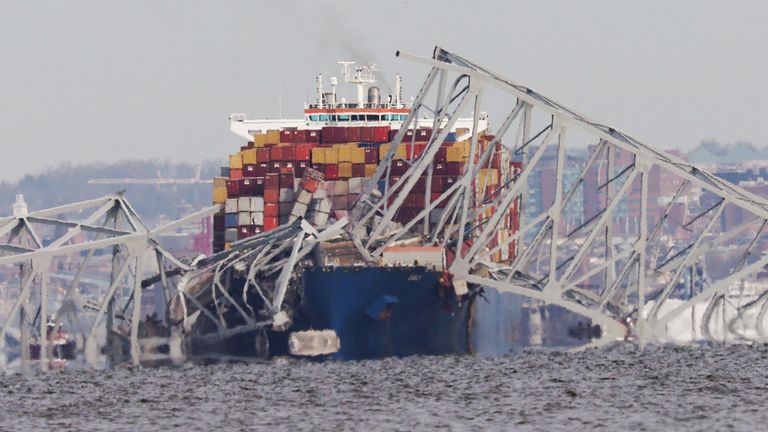Anatomy Of A Shipping Disaster: The Collapse Of The Francis Scott Key Bridge
In the grainy footage, a massive container ship sails through the waters of the Patapsco River, heading for Chesapeake Bay and the North Atlantic. It’s hardly a rare event, but there’s something very wrong here. The ship should sail under the tallest part of Baltimore’s Francis Scott Key Bridge, which spans the wide waterway. But instead it’s heading straight for one of the 1.6-mile bridge’s supports. It crashes right into it and the whole massive structure collapses like a house of cards.
Catastrophic destruction
Of course we’re talking about the Francis Scott Key Bridge in Baltimore and its catastrophic destruction on March 26, 2024. You’ve probably seen the video footage we described and were as appalled and shocked by it as we were.
But how on Earth could the Dali, a cargo ship loaded with almost 4,700 steel containers, have been so out of control as to lurch into the bridge as it did?
Spanned the Patapsco River for 47 years
To try and find an answer to that question we’ll examine the incident in detail. And we’ll also ask, how can such a disaster be averted in future? But first let’s learn more about the principal characters in this sorry saga: the bridge and the ship.
We’ll start with the bridge itself, which until the crash had spanned the Patapsco River for 47 years before its demise in the early hours of that ill-fated March day.
Francis Scott Key
More colloquially known as simply the Key Bridge, it was named in honor of Francis Scott Key, who wrote the lyrics for “The Star-Spangled Banner.” In fact, according to the Preservation Maryland website, the bridge lies just 100 yards from the spot where Key was detained aboard a British ship, HMS Tonnard.
This was during the War of 1812 between Britain and America, and Key wrote “The Star-Spangled Banner” lyrics while aboard the enemy vessel. The words, along with the tune of an English song, were soon adopted as an anthem by American service personnel.
U.S. national anthem
It’s said that Key composed the stirring words after watching the bombardment of Fort McHenry from his vantage point aboard the British battleship. The fort survived, despite coming under a barrage of 1,800 bombs.
Key’s verses were first printed as a handbill before being published in a Baltimore newspaper. In fact, it wouldn’t be until 1916 that the song was officially adopted as the U.S. national anthem.

